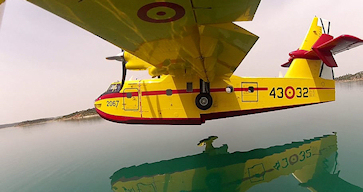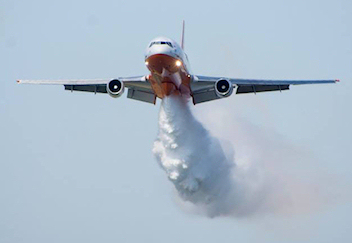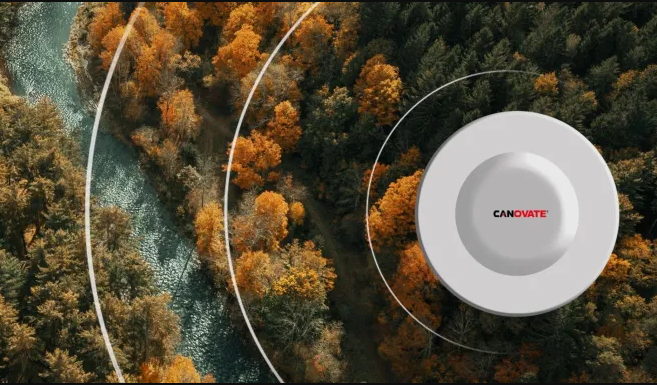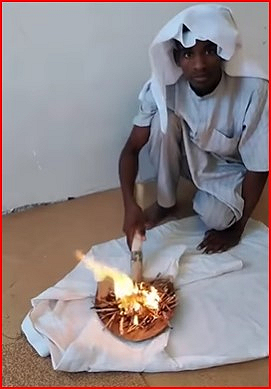Why force the population to breathe carcinogens when there are safer ways?
Listed below are some of the proven methods that should be employed to reduce wood smoke.
Whilst there is no safe level of air pollution, any method must be better than open burning
.
Listed below are some of the proven methods that should be employed to reduce wood smoke.
Whilst there is no safe level of air pollution, any method must be better than open burning
.
Masticators:
They can also be called chippers or mulchers. http://en.wikipedia.org/wiki/File:Masticator-usfs_image.jpg Masticators generally have rubber tracks and exert a very low presure on the ground (down to a few psi pressure). This prevents the ground from being compacted. They can mulch large quantities in a short time.
We all know the benefits of mulch, but not a lot of people know that forest fires race through the tree tops and the mulch doesn't usually catch as a secondry fire until later, when it is easily put out by conventional fire fighting methods.
Norske Skog in 2012 will be evaluating no-burn options in plantations, eg chipper roller. Thank you Norske!
They can also be called chippers or mulchers. http://en.wikipedia.org/wiki/File:Masticator-usfs_image.jpg Masticators generally have rubber tracks and exert a very low presure on the ground (down to a few psi pressure). This prevents the ground from being compacted. They can mulch large quantities in a short time.
We all know the benefits of mulch, but not a lot of people know that forest fires race through the tree tops and the mulch doesn't usually catch as a secondry fire until later, when it is easily put out by conventional fire fighting methods.
Norske Skog in 2012 will be evaluating no-burn options in plantations, eg chipper roller. Thank you Norske!
Masticator mulcher/chipper.
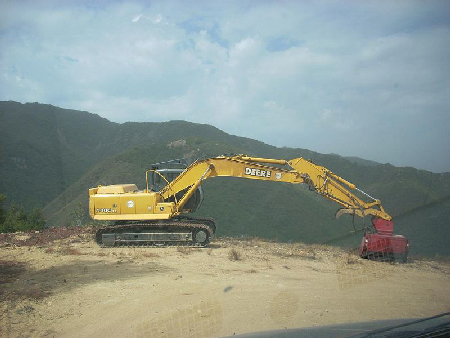
Air Curtain Burners:
Still using burning but so much less harmful, toxic smoke.
These can be inground or above ground as the pictures show.. They have a fan that provides an air curtain across the top of the fire, plus the forced air helps the fire burn. Just a whiff of smoke emerges from the burner when the air curtain is broken to load the fire with more debri.
Still using burning but so much less harmful, toxic smoke.
These can be inground or above ground as the pictures show.. They have a fan that provides an air curtain across the top of the fire, plus the forced air helps the fire burn. Just a whiff of smoke emerges from the burner when the air curtain is broken to load the fire with more debri.
Above ground burner: http://www.youtube.com/watch?v=mo4K1dM2GH4
In ground burner: http://www.youtube.com/watch?v=1nTmaQAon5I&NR=1
More can be found here
More can be found here
The Colorado Department of Public Health and Environment recommends the use of air curtain burners because an air curtain burner (ACB) creates less particulate pollution than burning the same amount of wood in an open pile.
In contrast to Colorado, Richard Chuter for our Forest Practices Authority says ACB's are unsuitable because of cost and logistics. Mr Chuter should declare his pecuniary interests.
Health is of no concern? What does he think the smoke is costing population health already inTasmania? What in years to come?
MLC says air curtain burners can reduce environmental and health impacts of forestry burn - offs
BUSHFIRE MITIGATION IN AUSTRALIA STREAMLINED BY AIR CURTAIN BURNERS -get the facts.
In contrast to Colorado, Richard Chuter for our Forest Practices Authority says ACB's are unsuitable because of cost and logistics. Mr Chuter should declare his pecuniary interests.
Health is of no concern? What does he think the smoke is costing population health already inTasmania? What in years to come?
MLC says air curtain burners can reduce environmental and health impacts of forestry burn - offs
BUSHFIRE MITIGATION IN AUSTRALIA STREAMLINED BY AIR CURTAIN BURNERS -get the facts.
Slow Pyrolysis:
This is a totally closed method of burning without air. There are excellent side benefits from the process such as i) biochar, or ii) syngas for electricity generation.
https://biochar-international.org/
This is a totally closed method of burning without air. There are excellent side benefits from the process such as i) biochar, or ii) syngas for electricity generation.
https://biochar-international.org/
Slow pyrolysis system.
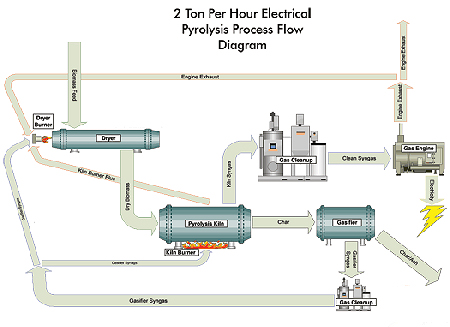
Reducing Plantations:
This is the prefered way; stop the smoke at the source.
Same height, same age plantations actually aid fire by changing wind paterns.
When the clearfelling stops - the burning and smoke will too! An analysis of plannedburning in Tasmania by Charles and Claire Gilmore, Pictues by Rob Blakers
The article and comments can be found at https://www.tasmaniantimes.com/2010/07/ashes-to-ashes-dust-to-dust/
This is the prefered way; stop the smoke at the source.
Same height, same age plantations actually aid fire by changing wind paterns.
When the clearfelling stops - the burning and smoke will too! An analysis of plannedburning in Tasmania by Charles and Claire Gilmore, Pictues by Rob Blakers
The article and comments can be found at https://www.tasmaniantimes.com/2010/07/ashes-to-ashes-dust-to-dust/
Filling the air with smoke in 2010.
Flame Retardant Trees and Shrubs:
It is adviseable to plant European trees and shrubs which have a higher water content and no volatile oils.
These 'fire retardant' species minimize planned burning and deliberate polluting of the air.
Courtesy of the Australian Plant Society -Victoria. Fire Resistant and Retardant Plants.
Remove Weeds: Eucaluptus globulus (Tasmanian Bluegum) - United States National Park Service consider it an invasive species due to its ability to quickly spread and displace native plant communities, while local authorities, especially many fire departments across California consider them to be a major fire hazard.
Eucalyptus globulus is a fast growing tree that has become one of the most common hardwood plantation eucalypts in Australia.
It is adviseable to plant European trees and shrubs which have a higher water content and no volatile oils.
These 'fire retardant' species minimize planned burning and deliberate polluting of the air.
Courtesy of the Australian Plant Society -Victoria. Fire Resistant and Retardant Plants.
Remove Weeds: Eucaluptus globulus (Tasmanian Bluegum) - United States National Park Service consider it an invasive species due to its ability to quickly spread and displace native plant communities, while local authorities, especially many fire departments across California consider them to be a major fire hazard.
Eucalyptus globulus is a fast growing tree that has become one of the most common hardwood plantation eucalypts in Australia.
Agricultural Pulp - Wheat Pulp not Wood Pulp:
The majority of Canada's paper is currently made from Boreal forests and Temperate rainforests. Straw from Canada's wheat harvest could produce 8 millions of tonnes of pulp-equivalent to the paper volume used by the North American newspaper industry every year. That could result in a saving of 100 million trees each year-without impacting food production or increasing energy inputs, while providing a new source of income for grain growers.
That's a powerful concept-completely re-inventing the North American pulp & paper industry to run on agricultural waste instead of cutting down forests.
There are many initiatives to reduce the use of fire in agriculture. Alternatives to burning are now encouraged because they have less impact on air quality and are more environmentally sustainable. Wheat stubble is used to produce straw board or it can be returned to the soil to reduce erosion and moisture loss. Ethanol production from a range of agricultural waste products such as wheat and rice straw and sugar cane waste is in the early stages. Land managers now routinely use tools to model dispersion of smoke in the atmosphere. This helps to manage and predict air quality outcomes from biomass burning in their areas.
The majority of Canada's paper is currently made from Boreal forests and Temperate rainforests. Straw from Canada's wheat harvest could produce 8 millions of tonnes of pulp-equivalent to the paper volume used by the North American newspaper industry every year. That could result in a saving of 100 million trees each year-without impacting food production or increasing energy inputs, while providing a new source of income for grain growers.
That's a powerful concept-completely re-inventing the North American pulp & paper industry to run on agricultural waste instead of cutting down forests.
There are many initiatives to reduce the use of fire in agriculture. Alternatives to burning are now encouraged because they have less impact on air quality and are more environmentally sustainable. Wheat stubble is used to produce straw board or it can be returned to the soil to reduce erosion and moisture loss. Ethanol production from a range of agricultural waste products such as wheat and rice straw and sugar cane waste is in the early stages. Land managers now routinely use tools to model dispersion of smoke in the atmosphere. This helps to manage and predict air quality outcomes from biomass burning in their areas.
Nature's way:
Leave the waste to rot. Why burn it, this is not natures way at all.
We all know the benefits of mulch:
It retains moisture and the organisms that break it down.
It doesn't kill off native species that can not withstand fire.
It doesn't leave us just with changed species designed to tolerate fire.
It suppresses weed growth, that would otherwise require chemicals to control them, or more burning.
Leave the waste to rot. Why burn it, this is not natures way at all.
We all know the benefits of mulch:
It retains moisture and the organisms that break it down.
It doesn't kill off native species that can not withstand fire.
It doesn't leave us just with changed species designed to tolerate fire.
It suppresses weed growth, that would otherwise require chemicals to control them, or more burning.
.
Biochar Blanklet:
http://www.science20.com/mara_grunbaum/biochar_blanket_turns_plant_waste_kiln-90311
A heat-resistant laminate “blanket” that can be wrapped around a slash pile to form a biochar-baking kiln. Light enough to carry in the back of a pickup truck, the wrap material is impermeable to air, and it’s punctuated with a number of adjustable vents that can control the flow of air into a slash pile like the airholes in a backyard barbecue. A fire needs oxygen to burn; when its flow is restricted by closing off the vents, the plant waste doesn’t combust but instead undergoes a different chemical process called pyrolysis, smoldering slowly and leaving chunks of solid carbon, or biochar, behind.
Compared to an open fire, the covered process significantly reduces the amount of smoke and particulate pollution released into the air.
http://www.science20.com/mara_grunbaum/biochar_blanket_turns_plant_waste_kiln-90311
A heat-resistant laminate “blanket” that can be wrapped around a slash pile to form a biochar-baking kiln. Light enough to carry in the back of a pickup truck, the wrap material is impermeable to air, and it’s punctuated with a number of adjustable vents that can control the flow of air into a slash pile like the airholes in a backyard barbecue. A fire needs oxygen to burn; when its flow is restricted by closing off the vents, the plant waste doesn’t combust but instead undergoes a different chemical process called pyrolysis, smoldering slowly and leaving chunks of solid carbon, or biochar, behind.
Compared to an open fire, the covered process significantly reduces the amount of smoke and particulate pollution released into the air.

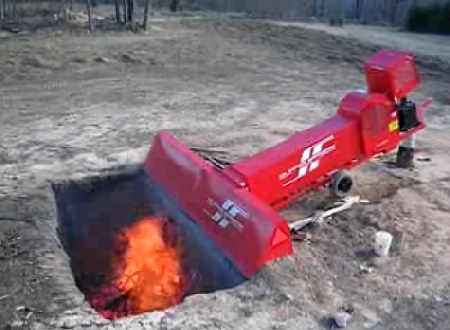


Alternative Solutions
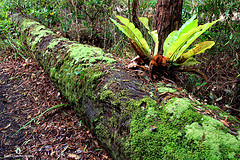
This or this?
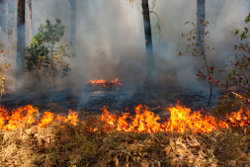
BIOCHAR - THE GOOD AND NOT SO GOOD
Biochar is the carbon (C) rich product when biomass, such as wood, manure or leaves, is heated with little or no available oxygen.
In Tasmania green groups remain opposed to industrial forestry to fuel furnaces because of the environmental destruction and release of carbon dioxide into the atmosphere.
However, biochar consultant, Frank Strie says Tasmania needs to develop a carbon economy with biochar at the centre of the state's 'clean energy' mix.
See the latest KON-TIKI-TAS deep cone kiln presentation here
Go here to read a 21st May 2015 general information BROCHURE on biochar.
Biochar is the carbon (C) rich product when biomass, such as wood, manure or leaves, is heated with little or no available oxygen.
In Tasmania green groups remain opposed to industrial forestry to fuel furnaces because of the environmental destruction and release of carbon dioxide into the atmosphere.
However, biochar consultant, Frank Strie says Tasmania needs to develop a carbon economy with biochar at the centre of the state's 'clean energy' mix.
See the latest KON-TIKI-TAS deep cone kiln presentation here
Go here to read a 21st May 2015 general information BROCHURE on biochar.
Responsible Forest management:
Responsible forest management means forests are managed in a way that protects the water, soil and wildlife. It means communities, indigenous peoples, forest workers - anyone who is affected by what happens to forests - agree on how the forest will be managed.
Responsible forest management means forests are managed in a way that protects the water, soil and wildlife. It means communities, indigenous peoples, forest workers - anyone who is affected by what happens to forests - agree on how the forest will be managed.
Introduce Elephants!
"The smoke issue of prescribed burning, the risk of escapes of prescribed burning is forcing a rethink about how we're going to interface communities with bushland." - see the above link, And,
"Finally, a serious side effect is smoke pollution, which can briefly fumigate nearby communities. Because of these constraints, attention is increasingly being focused on managing fuel without burning. This can involve using herbivores and thinning vegetation, including burning the debris in specially designed furnaces that have low smoke emissions". - Prof David Bowman. https://theconversation.com/explainer-back-burning-and-fuel-reduction-20605
California Cities Turn To Hired Hooves To Help Prevent Massive Wildfires
Introduce goats
"The smoke issue of prescribed burning, the risk of escapes of prescribed burning is forcing a rethink about how we're going to interface communities with bushland." - see the above link, And,
"Finally, a serious side effect is smoke pollution, which can briefly fumigate nearby communities. Because of these constraints, attention is increasingly being focused on managing fuel without burning. This can involve using herbivores and thinning vegetation, including burning the debris in specially designed furnaces that have low smoke emissions". - Prof David Bowman. https://theconversation.com/explainer-back-burning-and-fuel-reduction-20605
California Cities Turn To Hired Hooves To Help Prevent Massive Wildfires
Introduce goats
It is a pity we are even discussing and studying burning when there are these other smokeless ways of land clearing, home heating and cooking.
Do Not Burn Green Waste: All it does is make smoke.
I have seen people straight after a storm, or as they are chain sawing, trying to burn fallen green waste.
I guess they have seen forestry burning their green waste so why shouldn't they?
Don't be inconsiderate; don't burn green waste, all it does is make smoke.
A guide on how to burn small-scale vegetation with minimal smoke has been prepared by the EPA..
I have seen people straight after a storm, or as they are chain sawing, trying to burn fallen green waste.
I guess they have seen forestry burning their green waste so why shouldn't they?
Don't be inconsiderate; don't burn green waste, all it does is make smoke.
A guide on how to burn small-scale vegetation with minimal smoke has been prepared by the EPA..
JFE pyrolysis unit:
Production of biochar with this pyrolysis technology is carbon negative, because biochar produced will absorb carbon dioxide in the atmosphere is greater than the biochar-making process. Biochar is applied again to the farm will provide benefits for soil fertility and sequestration of CO2 from the atmosphere.
JFE continuous pyrolysis technology will provide solutions to those problems. Waste biomass will be converted into biochar and energy for heat and electricity production. The smoke that interfere with vision and breathing are also not going to happen because of exhaust emissions from the pyrolysis plant is well below the emissions standards required.
(IBI) International Biochar Initiative Australia NZ Biochar European Biochar Certificate SE Asia Biochar US Biochar Initiative UC Davis Online Biochar Database Green your Head Biochar.info Biochar.org Biochar Farms Biochar Project Cornell University Biochar Biochar Innoculants Project Gardening with Biochar FAQ GEO TP Rooftop Open Source Ecology Biochar Pages Soil Quality
Production of biochar with this pyrolysis technology is carbon negative, because biochar produced will absorb carbon dioxide in the atmosphere is greater than the biochar-making process. Biochar is applied again to the farm will provide benefits for soil fertility and sequestration of CO2 from the atmosphere.
JFE continuous pyrolysis technology will provide solutions to those problems. Waste biomass will be converted into biochar and energy for heat and electricity production. The smoke that interfere with vision and breathing are also not going to happen because of exhaust emissions from the pyrolysis plant is well below the emissions standards required.
(IBI) International Biochar Initiative Australia NZ Biochar European Biochar Certificate SE Asia Biochar US Biochar Initiative UC Davis Online Biochar Database Green your Head Biochar.info Biochar.org Biochar Farms Biochar Project Cornell University Biochar Biochar Innoculants Project Gardening with Biochar FAQ GEO TP Rooftop Open Source Ecology Biochar Pages Soil Quality
Put in more fire trails:
This allows better and faster access to burns to control the fire and the smoke.
And, put the fire completely out; don't leave it to smoke!
It seems to be the way here in Tasmania to let burns smoulder, sometimes for days and weeks.
This allows better and faster access to burns to control the fire and the smoke.
And, put the fire completely out; don't leave it to smoke!
It seems to be the way here in Tasmania to let burns smoulder, sometimes for days and weeks.
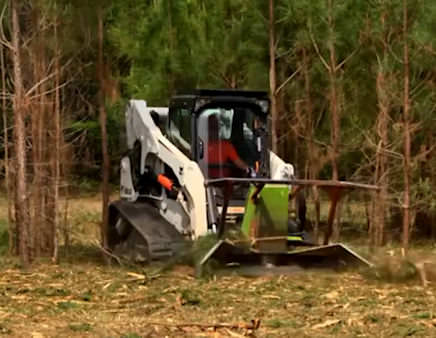
Fast land clearing with disc mulcher.
No burning and no smoke!
No burning and no smoke!
Catch Firebugs:
Pyromania is a desire to burn things.
Go here to read how deliberate smoke can be stopped.
Help catch arsonists before they damage our health and our lives
Pyromania is a desire to burn things.
Go here to read how deliberate smoke can be stopped.
Help catch arsonists before they damage our health and our lives
Use of abatement notices:
Council is required by section 20(1) of the Local Government Act 1993:
(a) to provide for the health, safety and welfare of the community;
7.2 Sections 199 - 204 of the Local Government Act 1993 relate to statutory
nuisances and empower Council to act to abate such nuisances.
Council is required by section 20(1) of the Local Government Act 1993:
(a) to provide for the health, safety and welfare of the community;
7.2 Sections 199 - 204 of the Local Government Act 1993 relate to statutory
nuisances and empower Council to act to abate such nuisances.
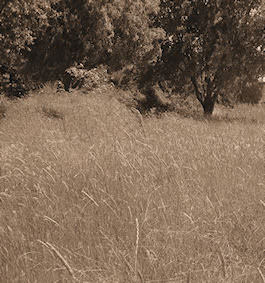
Wood heaters:
How to reduce wood heater smoke can be found on these EPA Youtube videos
Remember it is better health-wise for you, your neighbour, and the environment if you can heat with gas or electric and not wood.
How to reduce wood heater smoke can be found on these EPA Youtube videos
Remember it is better health-wise for you, your neighbour, and the environment if you can heat with gas or electric and not wood.
Perimeter Defence System:
A wide area of mown grass around each town perimeter in a bushfire prone area and a bore water or salt water driven sprinkler system for fire suppression if fires were to come that way.
With a bit of initiative even Insurance companies could be convinced to put up some money to help set up a fire protection system. - Pete Godfrey.
A wide area of mown grass around each town perimeter in a bushfire prone area and a bore water or salt water driven sprinkler system for fire suppression if fires were to come that way.
With a bit of initiative even Insurance companies could be convinced to put up some money to help set up a fire protection system. - Pete Godfrey.
Mechanical fuel reduction trial announced by our PM on 26 March 2015:
"There are a number of benefits from this practice as an alternative to controlled burning, including community concerns over air quality, not being limited by weather conditions and managing fuel loads that are close to buit-up areas."
At last it all sounds too good to be true doesn’t it with the acknowledged benefits from using mechanical rather than harmful burning practices (wonder where we have heard this before)?
But wait there is more….
How poor! The Federal Government is going to put up $1.5 million spread over 3 years just to trial something which has been going on successfully for years overseas and the trial is going to be coordinated by forestry agencies around Australia and the Australian Forest Products Association.
Who thinks it is going to get a ‘no’ tick before it starts, when here in Tasmania we are going to spend $28.5.million over 4 years to burn? Here.
All the benefits contained in the media release just disappeared!
"There are a number of benefits from this practice as an alternative to controlled burning, including community concerns over air quality, not being limited by weather conditions and managing fuel loads that are close to buit-up areas."
At last it all sounds too good to be true doesn’t it with the acknowledged benefits from using mechanical rather than harmful burning practices (wonder where we have heard this before)?
But wait there is more….
How poor! The Federal Government is going to put up $1.5 million spread over 3 years just to trial something which has been going on successfully for years overseas and the trial is going to be coordinated by forestry agencies around Australia and the Australian Forest Products Association.
Who thinks it is going to get a ‘no’ tick before it starts, when here in Tasmania we are going to spend $28.5.million over 4 years to burn? Here.
All the benefits contained in the media release just disappeared!

Maintain Firebreaks, Reduce Fire Hazards:
The GOAT BRIGADE - Preventing wild fires and reducing harmful planned burns.
SHEEP GRAZING - Preventing planned burns, pesticides and wild fires.
SHEEP GRAZING - Preventing planned burns, pesticides and wild fires.
"Some foresters claim burning forest debris is ecologically essential for eucalypt regeneration after logging, but the basis for this claim is scientifically poorly established."
Where there is smoke; there is forestry - Prof David Bowman
Where there is smoke; there is forestry - Prof David Bowman
Aerial Waterbombing
43 Group is very well equipped in Spain with a fleet of fourteen Bombardier CL-215T’s and three CL-315’s.
Click on the above photo to watch them in action.
Then read more about this multi-role aircraft HERE
Click on the above photo to watch them in action.
Then read more about this multi-role aircraft HERE
DC10 Very Large Air Tanker in Australia?
Click on the above photo to read the story
Click on the above photo to read the story
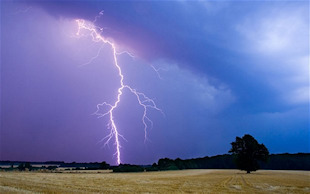
Early Lightning Detection
Early lightning detection can allow fires to be put out sooner and smoke to be minimised.
Devastating fires were caused in Tasmania by lightning strikes and the state was covered in pernicious smoke for a long time.
18.2.2016 - Letter re early lightning warning system
18.4.2016 - Letter from the Federal Minister for the Environment - Greg Hunt
05.8.2015 -Tenders closed
07.8.2017 - "The BoM system is up and running as an additional layer on our satellite viewer": http://satview.bom.gov.au/
Two other real-time systems for lightning detection can be found below:
Blitzortung real-time lightning data can be found HERE
Early lightning detection can allow fires to be put out sooner and smoke to be minimised.
Devastating fires were caused in Tasmania by lightning strikes and the state was covered in pernicious smoke for a long time.
18.2.2016 - Letter re early lightning warning system
18.4.2016 - Letter from the Federal Minister for the Environment - Greg Hunt
05.8.2015 -Tenders closed
07.8.2017 - "The BoM system is up and running as an additional layer on our satellite viewer": http://satview.bom.gov.au/
Two other real-time systems for lightning detection can be found below:
Blitzortung real-time lightning data can be found HERE
Cremation
New alternative to cremation. Disolving the dead
New alternative to cremation. Disolving the dead
More aerial water bombers in action - Tasmania needs more of this type of fire fighting.
However, one of the Erikson Sky Crane crashes. Most are more than 60 years old.
However, one of the Erikson Sky Crane crashes. Most are more than 60 years old.
Emergency Management Victoria is ready. Why isn't Tasmania?
Click on the above photo to read the report
Click on the above photo to read the report
Oregon is catching up on biochar. They sure do need to do something about all their forestry fires, plannedburns and smoke!
January 2020
NSW Fire Chief - Hazard Reduction Burning Not the Panacea
Qld Fire Chief rejects critism on shortfall in hazard reduction burns
Victoria CFA Chief says calls for more burns emotional load of rubbish
NSW Fire Chief - Hazard Reduction Burning Not the Panacea
Qld Fire Chief rejects critism on shortfall in hazard reduction burns
Victoria CFA Chief says calls for more burns emotional load of rubbish
Forest Fires Can Be Prevented With PanTher Radar - 4.8.2022
"With PanTher Radar (electro-optical thermal radar), forests can be monitored 365 days - 24 hours with 360-degree panoramic view unmanned, and changes such as a possible smoke, heat detection or movement can be monitored on the local and remote monitoring screen, and instant alarms and e-mails can be sent to the authorities. It is transmitted via SMS, etc. methods. With PanTher Radar, it is possible to protect forests and prevent fires." - Click on the pic
Now there is no excuse. We have to stop burning stuff
"With PanTher Radar (electro-optical thermal radar), forests can be monitored 365 days - 24 hours with 360-degree panoramic view unmanned, and changes such as a possible smoke, heat detection or movement can be monitored on the local and remote monitoring screen, and instant alarms and e-mails can be sent to the authorities. It is transmitted via SMS, etc. methods. With PanTher Radar, it is possible to protect forests and prevent fires." - Click on the pic
Now there is no excuse. We have to stop burning stuff
Stanford researchers have developed a gel-like fluid to prevent wildfires
The unique properties of these gel-like retardant fluids allow them to be applied using standard agricultural spraying equipment or from aircraft. While it washes away slowly, providing the ability to protect treated areas against fire for months
The unique properties of these gel-like retardant fluids allow them to be applied using standard agricultural spraying equipment or from aircraft. While it washes away slowly, providing the ability to protect treated areas against fire for months
August 2023 - GROWING CONCERNS ABOUT BIOCHAR SAFETY AND CARBON CREDITS
“..new information about biochar is raising concerns about the safety of its use on agricultural land, especially in large quantities, as biochar may be more contaminated with carcinogenic,. mutagenic and persistent pollutants than previously thought.
“..new information about biochar is raising concerns about the safety of its use on agricultural land, especially in large quantities, as biochar may be more contaminated with carcinogenic,. mutagenic and persistent pollutants than previously thought.
How I iron my shirt.
To go to the Instagram reel - Click on the photo
To go to the Instagram reel - Click on the photo
